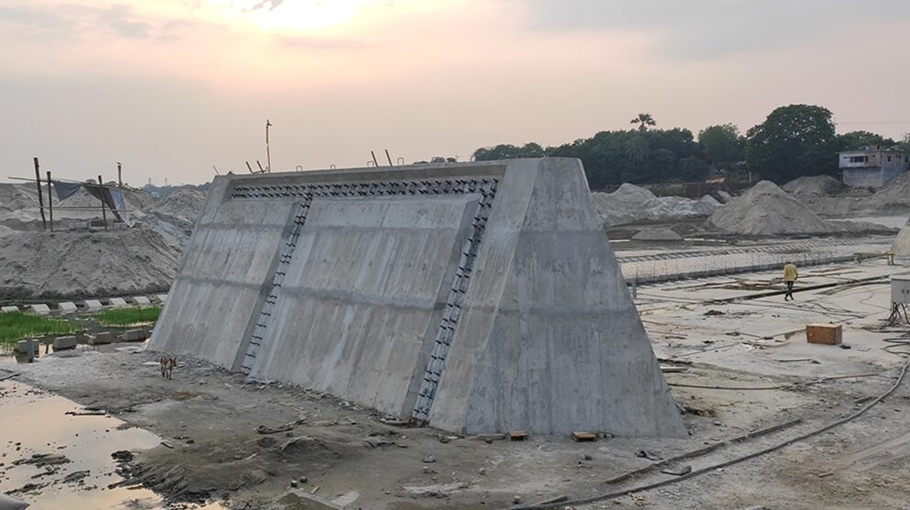Largest Rubber Dam in country nearing completion in C’nwabganj

Rubber dam, an ever-largest in the country and the tenth in the south Asian countries, is being constructed on the Mahananda river in Chapainawabganj district.
After the completion of the project, 8,000 hectares of land on both sides of the river will get irrigation facilities which will also help to produce agricultural crops and trees worth Tk 55 crore 83 lakhs and produce fish worth Taka two crore 37 lakhs annually.
The dam will contribute largely to the socio-economic development of the people living under the dam area.
People living beside the Mahanada River surrounding Chapainwabganj face a perennial shortage of water due to the adverse impact of the Farakka Barrage, drying up of land, excessive use of subterranean water, less rainfall and the harmful effect of climate change.
The dam will help the Mahananda River to hold 15 to 20 feet of water round the year. The farmers will also be able to cultivate their crops and the fishermen will be able to procure fish from this dam area around the year.
Local people informed due to depletion of underground water level, people living beside the river Mohananda and the surrounding areas failed to collect their drinking water from the hand-tubewells. Many of the hand tube wells of the areas have become out of order due to want of underground water.
After the construction of the rubber dam, the water will remain full in the river and the subterranean water level will also be recharged and people will be able to pump drinking water through their hand-tube-wells easily.
Ahmed Ali, a sexagenarian farmer of Barogharia village of Chapainawabganj sadar upazila informed, after the commissioning of the dam, many fallow lands beside the river will get irrigation facilities and crops will be grown there. Even, hundreds of acres of land in the Barind region will get the facility of irrigation and the region will be saved from the looming desertification.As a result, he demanded the completion of the rubber dam project as soon as possible.
Shamsul Alam, a fish trader in Chapainawanganj sadar area informed, fish is rarely found in the river nowadays. Except during the rainy season, the river Mahananda remains dry and weary for the next eight-nine months and the river beds virtually turn to playgrounds for children and adults. We hope, after the construction of the rubber dam, the river will remain filled with water and ultimately the production of fish will also be increased.
Mozahar Ali Pramanik, Executive Engineer of LGED, Chapainawabganj, informed the rubber dam will increase the irrigation facilities on the raised ground of the Barind region and the use of subterranean water will also be decreased.
The fallow lands surrounding the region will also be cultivated and the underground water level will be recharged.
Already 87 per cent (393) metres of the rubber dam project have been completed and it is hoped the next works of the project will be completed by the next June, informed Mokhlesur Rahman, Executive Engineer of Water Development Board in Chapainwabganj. He further mentioned, the dredging of the river to retain navigability and the construction of the rubber dam started in January-2017. The preliminary cost of the project was fixed at Taka 187 crore 31 lakh 63 thousand but later on, the cost was increased to Tk 251 crore.
He said, 36 kilometres of the upper stream and downstream of the river have been dredged.
It is learnt, during her visit to Chapainawabganj on May-11, 2011, Prime Minister Sheikh Hasina pledged to construct the rubber dam of the river Mohananda.
Abdul Wadud Biswas, Member of Parliament of Chapainawabganj sadar upazila and General Secretary of district Awami League informed the rubber dam project is a great gift for the people of Chapainwabganj from Prime Minister Sheikh Hasina. After the completion of the project, thousands of fishermen and farmers of 80 kilometres of the area will be benefitted.




